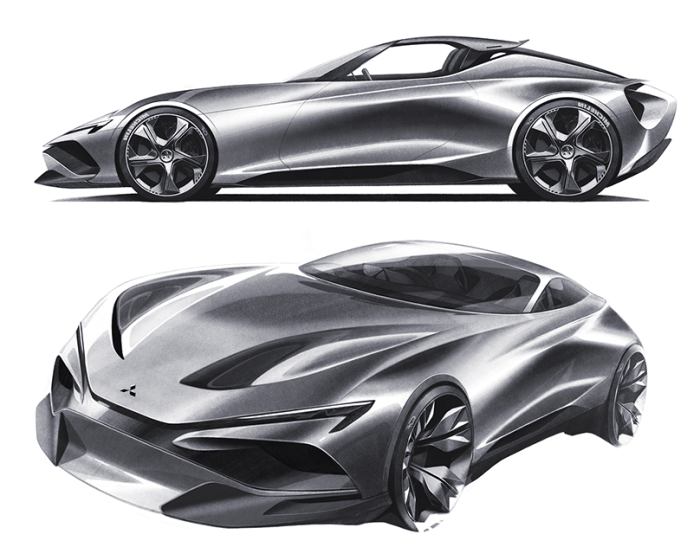Engine design in sports cars is a captivating intersection of engineering prowess and high-octane excitement. As automotive enthusiasts desire not just speed but also precision and efficiency, understanding the intricacies of engine types, performance metrics, materials, and modern technologies becomes crucial. This exploration unveils how factors like engine placement and innovative cooling systems define the driving experience, while also addressing the growing importance of sustainability in the automotive landscape.
When exploring the world of high-performance vehicles, understanding sports car engine specifications is crucial. These specifications dictate the potential power and efficiency of a sports car, influencing everything from acceleration to top speed. A well-designed engine can transform an ordinary drive into an exhilarating experience, making it essential for enthusiasts and potential buyers alike to delve into these details.
Engine Design in Sports Cars
The engine design in sports cars is a crucial element that influences not only performance but also the overall driving experience. With various types of engines available, understanding their configurations, performance metrics, and advancements in technology is vital for enthusiasts and manufacturers alike. This exploration will delve into the types of engines, performance metrics, materials used, cooling systems, tuning processes, engine placement, and environmental considerations.
Engine Types in Sports Cars
Sports cars utilize a range of engine types, each offering distinct advantages and performance characteristics. The most common configurations include V6, V8, and hybrid engines.
- V6 Engines: These engines are compact and offer a balance between power and fuel efficiency, making them a popular choice for many modern sports cars.
- V8 Engines: Known for their power and aggressive sound, V8 engines provide high horsepower and torque, making them a favorite among traditional sports car enthusiasts.
- Hybrid Configurations: Combining internal combustion engines with electric motors, hybrids offer improved efficiency and lower emissions while still delivering impressive performance metrics.
A comparison between naturally aspirated and turbocharged engines shows differing performance and efficiency outcomes. Naturally aspirated engines rely on atmospheric pressure for air intake, resulting in linear power delivery. Conversely, turbocharged engines use forced induction to increase power output without significantly increasing engine size, though they may introduce turbo lag.
Electric engines are also emerging in high-performance sports cars, providing instant torque and improved efficiency. However, their limitations in range and the weight of battery systems can influence performance dynamics.
Performance Metrics

Key performance metrics that define sports car engines include horsepower, torque, and RPM. Horsepower indicates the engine’s ability to perform work, while torque measures the twisting force available for acceleration. RPM, or revolutions per minute, reflects how quickly the engine can spin, which directly affects acceleration and top speed.
The design of the engine plays a pivotal role in acceleration and maximum speed. A well-optimized engine can deliver higher horsepower and torque, enhancing the vehicle’s performance profile. To accurately assess engine performance, dynamometers are utilized, allowing for precise measurements of power output and torque under various conditions.
Engine Materials and Technology, Engine design in sports cars
The construction of high-performance engines often involves a selection of specialized materials that impact weight and durability. Common materials include:
- Aluminum: Lightweight and strong, aluminum is frequently used to reduce overall vehicle weight, enhancing speed and handling.
- Carbon Fiber: Known for its strength-to-weight ratio, carbon fiber components can significantly lower engine weight while enhancing structural integrity.
- Steel Alloys: Used in critical components for their strength, steel alloys can withstand the high temperatures and pressures associated with performance engines.
Advanced technologies, such as variable valve timing and direct fuel injection, have transformed modern sports car engines. These innovations improve fuel efficiency, optimize performance across various RPM ranges, and reduce emissions.
Cooling Systems in Sports Car Engines

Effective cooling systems are essential in sports car engines to maintain performance during high-speed driving. Various cooling methods include liquid cooling, which circulates coolant through the engine, and air cooling, which relies on ambient air to dissipate heat.
- Liquid Cooling: This method is highly efficient and commonly used in high-performance engines, providing consistent temperature regulation.
- Air Cooling: Although less common, air-cooled engines can be found in certain models and provide simplicity and reduced weight.
Maintaining optimal engine temperatures during high-performance driving is critical. Procedures include monitoring coolant levels, ensuring proper airflow, and regularly checking for leaks or blockages.
Tuning and Customization
Tuning sports car engines is a process aimed at enhancing performance metrics, including acceleration and horsepower. Various aftermarket modifications are available, such as upgraded exhaust systems, performance chips, and enhanced intake systems.
Examples of popular tuning practices among enthusiasts include:
- ECU Remapping: Altering the engine control unit settings to improve power delivery and efficiency.
- Cold Air Intakes: Replacing stock air intake systems with high-performance alternatives to enhance airflow and power.
- Performance Exhausts: Installing aftermarket exhaust systems to improve exhaust flow and engine sound.
Engine Placement and Chassis Dynamics

The placement of an engine—whether front-engine, mid-engine, or rear-engine—significantly influences a vehicle’s handling and dynamics. Each configuration offers distinct advantages regarding weight distribution and center of gravity.
- Front-Engine Layout: Common in many sports cars, this layout provides good stability at high speeds but can lead to understeering.
- Mid-Engine Layout: Often found in supercars, this configuration offers excellent balance and handling due to optimal weight distribution.
- Rear-Engine Layout: Popularized by models like the Porsche 911, rear-engine designs can provide unique handling characteristics but may be prone to oversteer.
The driving characteristics vary dramatically across these placements, affecting acceleration, cornering capabilities, and overall driving pleasure.
Environmental Considerations
The environmental impact of sports car engines has led the automotive industry to pursue sustainability solutions. New regulations regarding emissions standards are shaping engine design, pushing manufacturers to innovate.
Hybrid and electric sports cars have emerged as viable alternatives to traditional combustion engines. These vehicles not only reduce emissions but also offer enhanced performance metrics, demonstrating the potential for environmentally friendly designs in the sports car segment.
As the industry evolves, the focus on sustainability will continue to redefine engine design, ensuring that high-performance vehicles can coexist with environmental responsibility.
End of Discussion
In conclusion, the world of sports car engine design offers a thrilling blend of innovation and performance. From the roar of a turbocharged V8 to the silent efficiency of electric powertrains, each design choice significantly influences how these machines perform on the road. As the industry shifts towards more sustainable options, the evolution of engine technology will continue to redefine what we expect from sports cars, ensuring that the thrill of driving remains at the forefront of automotive engineering.
In the realm of sports cars, the engine types in sports cars play a pivotal role in their performance and character. Whether it’s a turbocharged inline-four or a roaring V8, each engine type offers unique advantages that cater to different driving styles. Understanding these variations helps car lovers appreciate the engineering marvels that bring these machines to life.



